Intro
Discover key Sed Rate facts, including ESR test purposes, normal sed rates, and elevated results, to understand inflammation and disease diagnosis, with related sedimentation rate information.
The sed rate, also known as the erythrocyte sedimentation rate (ESR), is a blood test that measures how quickly erythrocytes (red blood cells) settle at the bottom of a test tube containing a blood sample. It indirectly measures how much inflammation is in the body. The sed rate is a simple, yet effective tool used to diagnose and monitor various conditions, including inflammatory and autoimmune disorders. In this article, we will delve into the world of sed rate, exploring its importance, working mechanisms, and key information related to the topic.
The sed rate has been a cornerstone of medical diagnosis for decades, providing valuable insights into the body's inflammatory response. By understanding the sed rate, healthcare professionals can identify potential health issues, monitor disease progression, and adjust treatment plans accordingly. With its widespread use in clinical settings, it's essential to understand the sed rate's significance and how it contributes to patient care. Whether you're a healthcare professional or simply interested in learning more about this topic, this article aims to provide a comprehensive overview of the sed rate, its benefits, and its applications.
The sed rate is a fascinating topic that has garnered significant attention in the medical community. Its ability to detect inflammation and monitor disease activity makes it an indispensable tool in the diagnosis and management of various conditions. From rheumatoid arthritis to lupus, the sed rate plays a critical role in helping healthcare professionals understand the underlying mechanisms of these diseases. As we explore the world of sed rate, we'll examine the benefits, working mechanisms, and key information related to this topic, providing readers with a deeper understanding of its importance and applications.
What is Sed Rate?
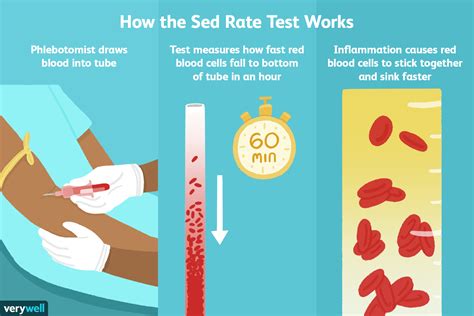
How Does Sed Rate Work?
The sed rate works by measuring the rate at which erythrocytes settle at the bottom of a test tube. When a blood sample is placed in a test tube, the erythrocytes settle at the bottom due to gravity. The rate at which they settle is influenced by the presence of inflammation in the body. During inflammation, the liver produces more acute-phase proteins, such as fibrinogen, which cause the erythrocytes to clump together, increasing their settling rate. The sed rate is calculated by measuring the distance the erythrocytes have settled after a specific time period, usually one hour.Benefits of Sed Rate
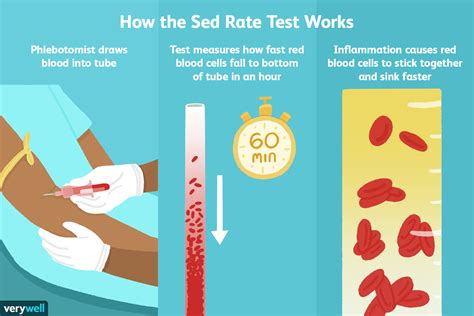
Normal and Abnormal Sed Rate Values
The normal sed rate value varies depending on age and sex. In general, the normal sed rate value is: * 0-20 mm/h for adults * 0-15 mm/h for children * 0-10 mm/h for infants Abnormal sed rate values can indicate the presence of inflammation, which can be a sign of various conditions. A high sed rate value can indicate: * Infections, such as pneumonia or tuberculosis * Autoimmune disorders, such as rheumatoid arthritis or lupus * Cancers, such as lymphoma or multiple myeloma * Other conditions, such as kidney disease or thyroid diseaseConditions Diagnosed with Sed Rate
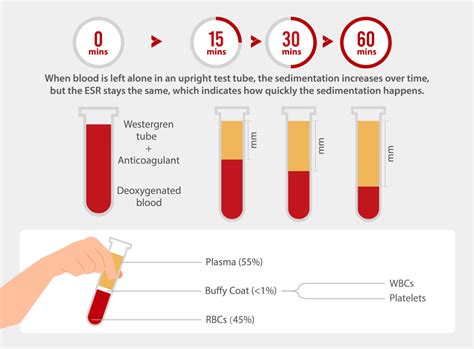
Limitations of Sed Rate
The sed rate has several limitations, including: * Non-specificity: The sed rate is a non-specific test, meaning it doesn't diagnose a specific disease. * Sensitivity: The sed rate is not sensitive enough to detect all cases of inflammation. * Variability: The sed rate can vary depending on various factors, such as age, sex, and laboratory techniques.How to Prepare for a Sed Rate Test
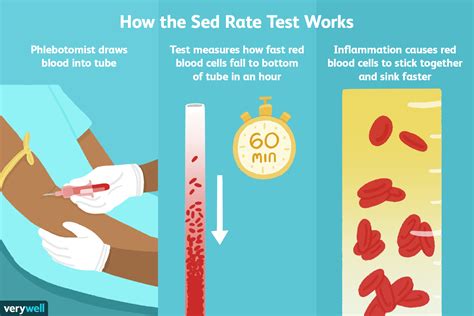
What to Expect During a Sed Rate Test
During a sed rate test, a blood sample is taken from a vein in your arm. The blood sample is then placed in a test tube and sent to a laboratory for analysis. The test results are usually available within a few hours or days, depending on the laboratory.Interpreting Sed Rate Test Results
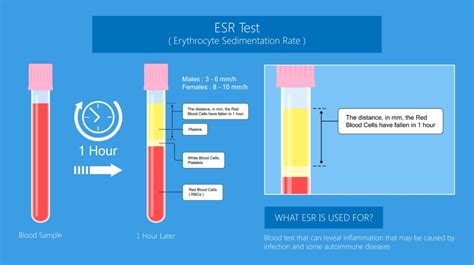
Common Questions About Sed Rate
Here are some common questions about sed rate: * What is the normal sed rate value? * What does a high sed rate value indicate? * What are the limitations of the sed rate test? * How is the sed rate test used to diagnose and monitor medical conditions?What is the purpose of the sed rate test?
+The sed rate test is used to detect inflammation in the body, which can be a sign of various conditions, including infections, autoimmune disorders, and cancers.
What does a high sed rate value indicate?
+A high sed rate value can indicate the presence of inflammation, which can be a sign of various conditions, including infections, autoimmune disorders, and cancers.
What are the limitations of the sed rate test?
+The sed rate test has several limitations, including non-specificity, sensitivity, and variability. It's essential to consider these limitations when interpreting test results and developing a treatment plan.
In conclusion, the sed rate is a valuable tool used to diagnose and monitor various medical conditions. By understanding the sed rate, healthcare professionals can identify potential health issues, monitor disease progression, and adjust treatment plans accordingly. We hope this article has provided you with a comprehensive overview of the sed rate, its benefits, and its applications. If you have any further questions or would like to share your experiences with sed rate testing, please don't hesitate to comment below. Share this article with your friends and family to help them understand the importance of sed rate testing and its role in maintaining good health.
